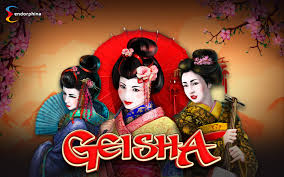Understanding this timeline illustrates how technological advancements and cultural appreciation fostered the growth of Geisha Slots into a refined gaming experience M88.
Design and Aesthetics of Geisha Slots
The visual appeal of Geisha Slots is integral to its success. Every element—graphics, symbols, music—works together to craft an authentic and mesmerizing atmosphere that attracts and retains players.
Visual Elements: Graphics, Symbols, and Themes
The heart of Geisha Slots’ design lies in its stunning graphics. Developers typically employ high-definition imagery depicting traditional Japanese scenery—cherry blossom trees, serene temples, lantern-lit streets. The geisha herself is portrayed with intricate kimonos and delicate accessories, showcasing craftsmanship and cultural detail.
Symbols on the reels often include:
- Geisha portraits
- Fans and parasols
- Cherry blossoms and plum blossoms
- Traditional Japanese utensils
- Lucky coins and charms
The game’s color palette emphasizes reds, golds, pinks, and blacks to evoke luxury, passion, and tradition. Each symbol is carefully designed to be visually appealing while maintaining cultural integrity.
Soundtrack and Audio Effects
Sound plays a pivotal role in immersing players into the world of Geisha Slots. Authentic Japanese melodies, shamisen strings, and subtle ambient sounds create a tranquil yet engaging environment.
When spinning the reels, gentle sounds mimic traditional instruments, enhancing anticipation. Winning combinations trigger harmonious chimes or bells, reinforcing positive reinforcement. During bonus rounds, thematic sound effects guide player expectations without overwhelming.
High-quality audio complements the visual experience, elevating the game’s overall aesthetic and emotional resonance.
Cultural Accuracy and Artistic Representation
While Geisha Slots aims to entertain, it also bears the responsibility of respectful cultural representation. Developers generally collaborate with cultural consultants to ensure accuracy in costumes, symbols, and settings.
However, debates around cultural stereotypes and appropriations persist. Some critics argue that such games commodify cultural symbols for entertainment. Responsible design involves celebrating traditions authentically without perpetuating misconceptions.
